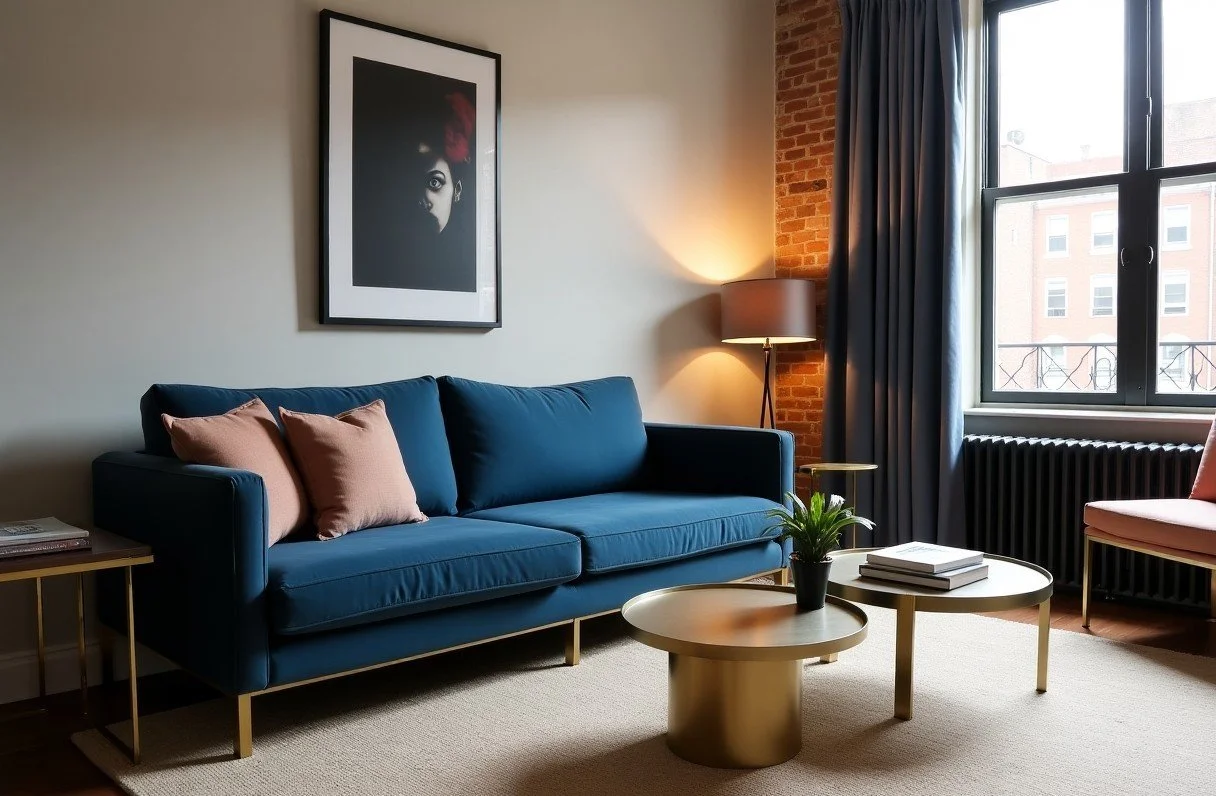The Calculated Makeover: Achieving High-Impact Design in Your NYC Apartment.
New York City living is all about making the most of every square foot. When it comes to transforming an apartment, the goal isn't just aesthetic appeal – it's about making the space work smarter, more efficiently, and beautifully, all without unnecessary expenditure. Whether you're a renter seeking a refreshing update or a first-time renovator, achieving high-impact design on a strategic budget is entirely possible.
It's not about extravagant spending; it's about informed decisions and strategic planning.
1. Define Your Vision (and Your "Must-Haves")
Before selecting a single item, clarity on your desires is paramount. What aspects of your current apartment function well, and what absolutely needs improvement?
Function First: Prioritize how you need the space to perform. Do you require enhanced storage, a dedicated work-from-home area, or a more inviting living environment? Functional needs often guide the most valuable design decisions.
Aesthetic Aspirations: Gather inspiration, but distill it to the core feelings and design elements that truly resonate. This helps to guide choices and prevent impulsive purchases that don't fit the overall vision.
Realistic Expectations: Acknowledge that an NYC apartment makeover often involves creative solutions for compact spaces and, in rentals, adherence to lease limitations.
2. Embrace Smart Sourcing and Strategic Investments
Maximizing value means understanding where to invest and where to be resourceful.
Invest in Key Pieces: Items that form the foundation of a space and are used daily – like a comfortable sofa or a supportive bed – often warrant a higher investment. Their durability and comfort contribute significantly to daily life.
Mix High and Low: A balanced approach combines foundational, quality pieces with more budget-friendly accessories, lighting, or decorative items. This creates visual richness without uniform high costs.
Leverage Industry Connections: Accessing trade relationships can open doors to exclusive product lines or more favorable pricing on furniture and materials. This often translates to clients acquiring premium items at more competitive rates than retail, with savings that can eventually help to offset the design fee itself.
3. Value Engineering: The Art of Intelligent Alternatives
Value engineering is a core strategy in maximizing a budget. It's a systematic process of analyzing design elements to identify cost-saving opportunities without compromising the project's overall aesthetic or functional integrity.
Material Alternatives: Consider how a high-quality porcelain or quartz can achieve the desired look and durability of a more expensive natural stone, offering similar aesthetics at a more accessible price point.
Optimizing Layouts: Sometimes, a clever reimagining of a layout or the integration of multi-functional furniture can resolve issues that initially seem to demand costly demolition or custom built-ins.
Prioritize Impact: Focus resources on elements that deliver the greatest transformative impact. A well-chosen paint color, a distinctive lighting fixture, or a statement rug can often revitalize a room more effectively than a costly structural change.
4. The Power of Expert Guidance and Tangible Returns
Navigating the multitude of choices, understanding material longevity, and coordinating various elements can be overwhelming and time-consuming. Expertise in design brings several quantifiable benefits:
Budget Adherence: Professionals help establish realistic budgets and monitor spending, minimizing unexpected expenditures.
Avoiding Costly Mistakes: Experienced oversight prevents common errors like mismeasurements or unsuitable material selections that lead to expensive re-dos.
Significant Time Savings: A streamlined design process, from conceptualization to procurement and coordination, translates directly into time savings for the client. For a typical project, this could mean saving approximately 10-15 hours per room, potentially accumulating 60-70 hours across the entire project. This allows clients to focus on their lives while their home is expertly transformed.
An NYC apartment makeover isn't just an expense; it's a strategic investment. By embracing clear vision, smart sourcing, and the principles of value engineering, homeowners can achieve a stunning transformation with clear benefits, both aesthetic and financial.
